
Most museums around the world have sections that highlight the human body and its nature which hinges on moving in wide and safe open spaces. As it ages, the body starts to perform movements like walking, running, jumping, crawling, dancing. The list goes on. This range of movement largely contributes to one’s physical health, mental health, and well-being. Currently, however, moving outside of the home is a struggle or comes with a cost due to the pandemic the whole world is experiencing.
But with the rise of available vaccines spreading across the world and increasing the chances of quicker herd immunity, it’s easier to hope for outdoor experiences that not just include exercising, but also visiting the wonderful must-see places.
To all, especially the museumgoers, it is time to shake the dust off your travel journal and start a new list of “museums to visit”, as some of them have already reopened. Like the Israeli-born American illustrator and writer Maira Kalman once said, “A visit to a museum is a search for beauty, truth, and meaning in our lives. Go to museums as often as you can.”
The Montreal Biodome, Quebec, Canada
Originally designed by the French architect Roger Taillibert, the Montreal Biodome was built for the 1976 Olympic Games as a velodrome where the track cycling and judo events were held. Years after the games, the building was repurposed and converted into a biodome.
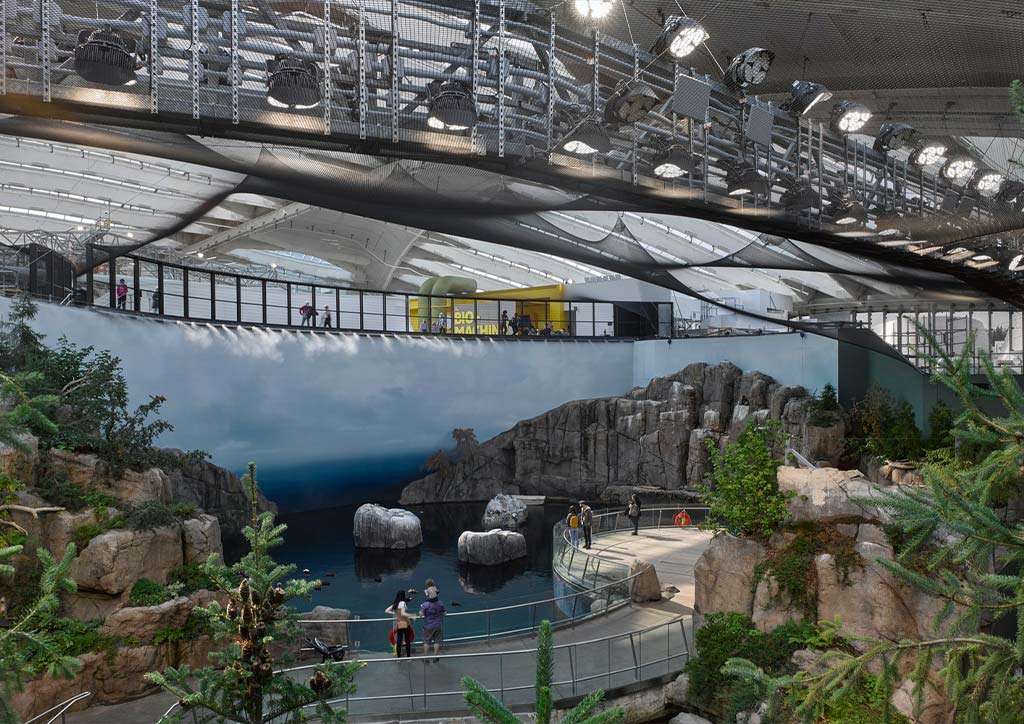
By its opening in 1992, it had become one of Canada’s most visited museums. In 2014, Montreal-based KANVA and Neuf Architect(e)s, won the competition for revamping the Biodome. The architects’ attack on redesigning the museum was not only for restoration or reuse but to elevate environmental sustainability and biophilic design by opening up a new core that serves as an open and central space linking all areas within the museum. They also introduced the “biophilic translucent skin wraps”–a layering that serves as protection for the museum’s rich ecosystems and a guide that helps the orientation of visitors.

Zeitz Museum of Contemporary Art Africa, Cape Town, South Africa
Originally the Grain Silo Complex of 1990, it was repurposed by the London-based architecture firm Heatherwick Studio and became the Zeitz Museum of Contemporary Art Africa–the world’s largest museum with 100 galleries especially made to house the continent’s contemporary art. Being a massive structure, it was viewed as more of a deconstruction project than new construction. In the research article “The Future of Modernism: Architectural Intention and Adaptive Re-use” by SOM’s associate director, Frank Mahan, and architectural professor Van Kluytenaar, the museum was an ideal model for modernism and adaptive re-use. To create its asymmetrical form and a large atrium (a defining feature of the museum), the team had to cut into 42 concrete tubes. To allow a better flow of natural light, the team also reused 100 windows and converted them into roof tiles, crafting them into one geodesic dome.
READ MORE: The World Architecture Community’s Community awards, 37th Cycle

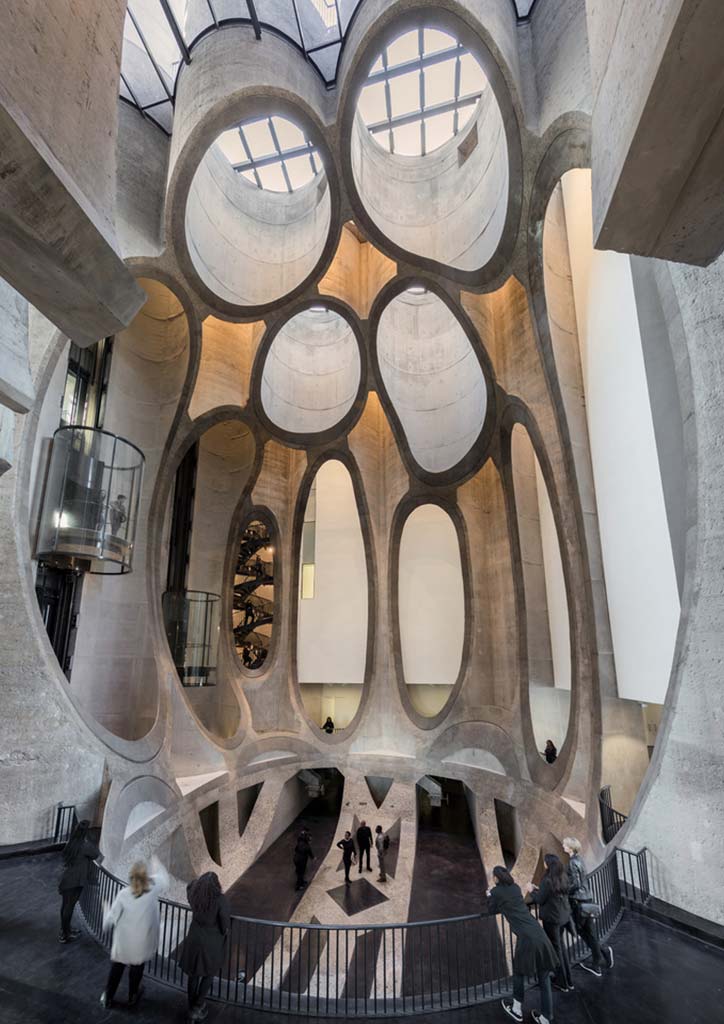
The Museo Soumaya, Mexico City, Mexico
Mexico’s Museo Soumaya can be best described as a breathing hexagonal structure. Opened in 2011, this 46 meter and six-story private museum showcase a rotate rhomboid shape supported by 28 curved steel columns of various shapes and sizes. Its exterior is also clad with 16,000 hexagonal aluminum tiles that give it its signature gleam. PAst the narrow entrance, visitors are welcomed by a large, white gallery that leads into a 6,000 square meter exhibition space housing thousands of art pieces. The top floor meanwhile is dominated by a peculiar skylight that showers the numerous Auguste Rodin sculptures with natural light. The museum’s designer, Mexican architect, Fernando Romero, delivered a museum design that expresses the eclectic taste of the private collector and his desire to create a remarkable type of cultural institution for the public.
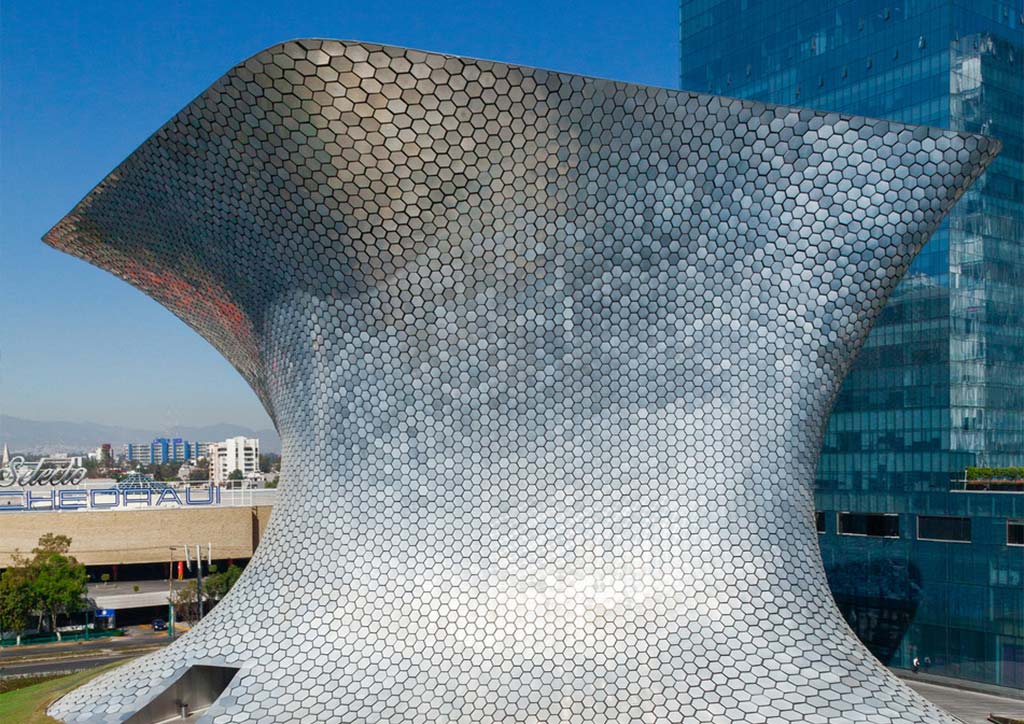
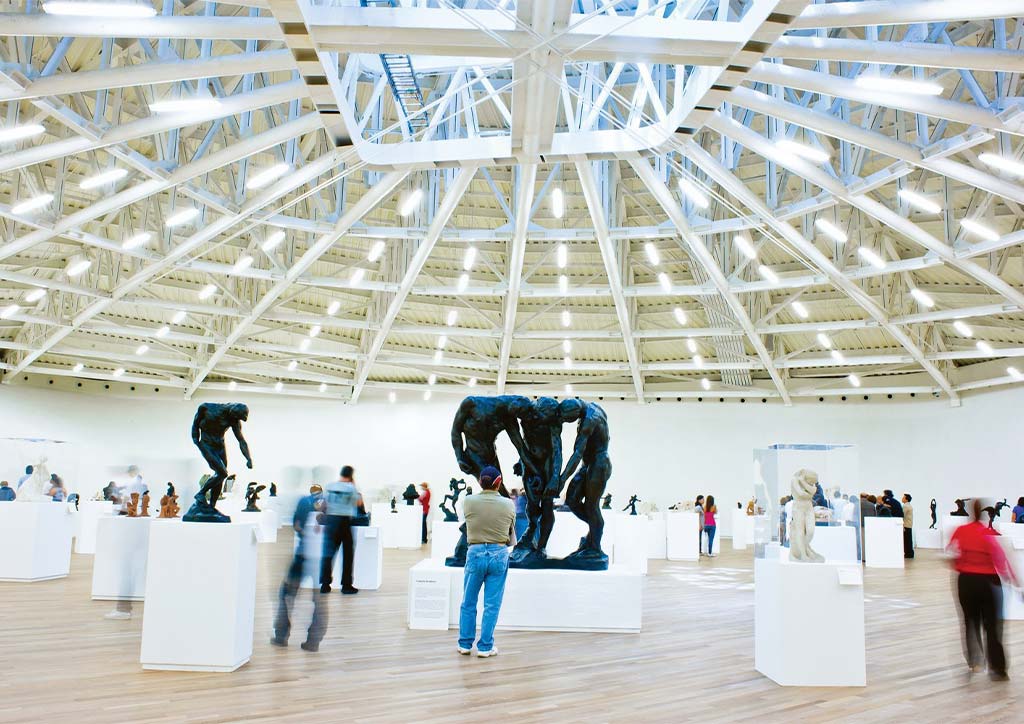
The City of Arts and Sciences, Valencia, Spain
A modern architectural marvel, the City of Arts and Sciences was designed by the power duo Spanish architects, Santiago Calatrava and Felix Candela. Completed in 2009, the entire museum is made up of several structures starting with the L’Hemisfèric, which houses the IMAX cinema, the planetarium and laserium. The L’Umbracle is an open structure enveloping a landscaped walk with plant species indigenous to Valencia. Another one is the Museu de les Ciències Príncipe Felipe, an interactive science museum formed like the skeleton of a whale. Then we have the open-air oceanographic park called L’Oceanogràfic. The Palau de les Arts Reina Sofia–an opera house dedicated to music and performing arts, and finally, the L’Àgora where large concerts and events are held, giving the complex a multi-functional space. This project was conceptualized with the idea of restoring the once-abandoned Valencia city and the provision of a linear park that will stretch through the city.
READ MORE: More from Anthology Festival 2021: Shelter Dialogues and What Makes a City

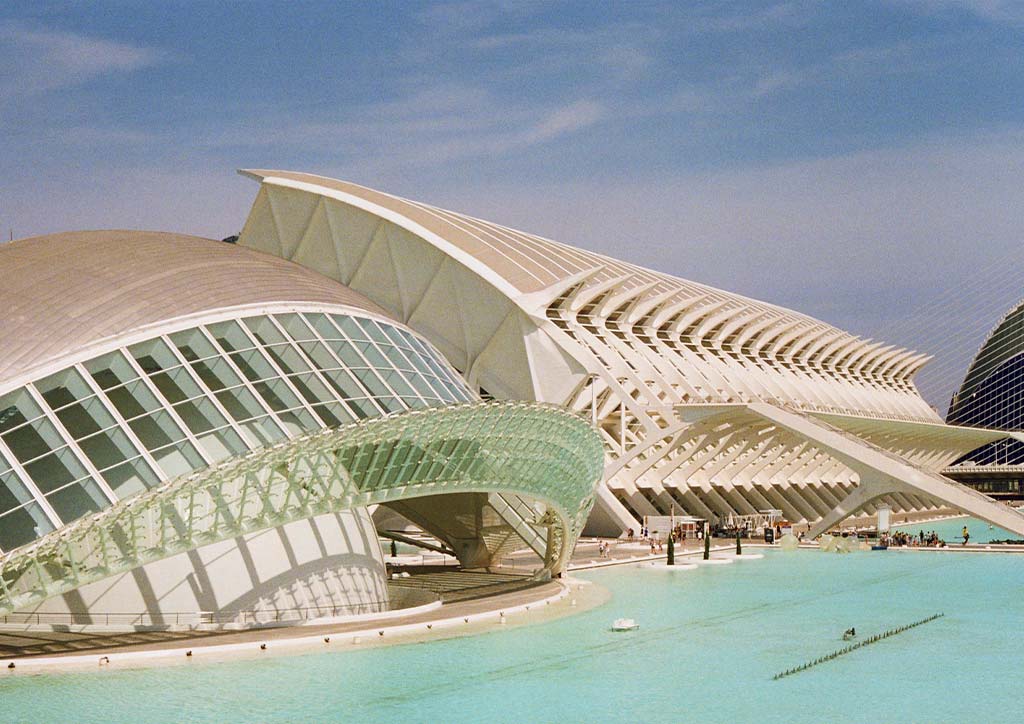
The Heydar Aliyev Center, Baku, Azerbaijan
The Heydar Aliyev Center in Baku is another jaw-dropping piece by the late Zaha Hadid. A neo-futuristic structure in the post-modernist style, the center is composed of three major areas – the auditorium, the gallery hall, and the museum. Completed in 2012, the design of the center establishes a continuous, fluid relationship between its surrounding plaza and the building’s interior. This harmonious link aims to remove any boundaries in the building, influencing the users to translate it to complex human issues such as gender, race, and origin. Among its spaces, the most captivating section of the entire development is the “Museum of Heyday Aliyev” which showcases the rich culture and history of the nation of Azerbaijan and the influences of its late President Heydar Aliyev.
READ MORE: The Bridge of Life: Public Structures for helping mental health
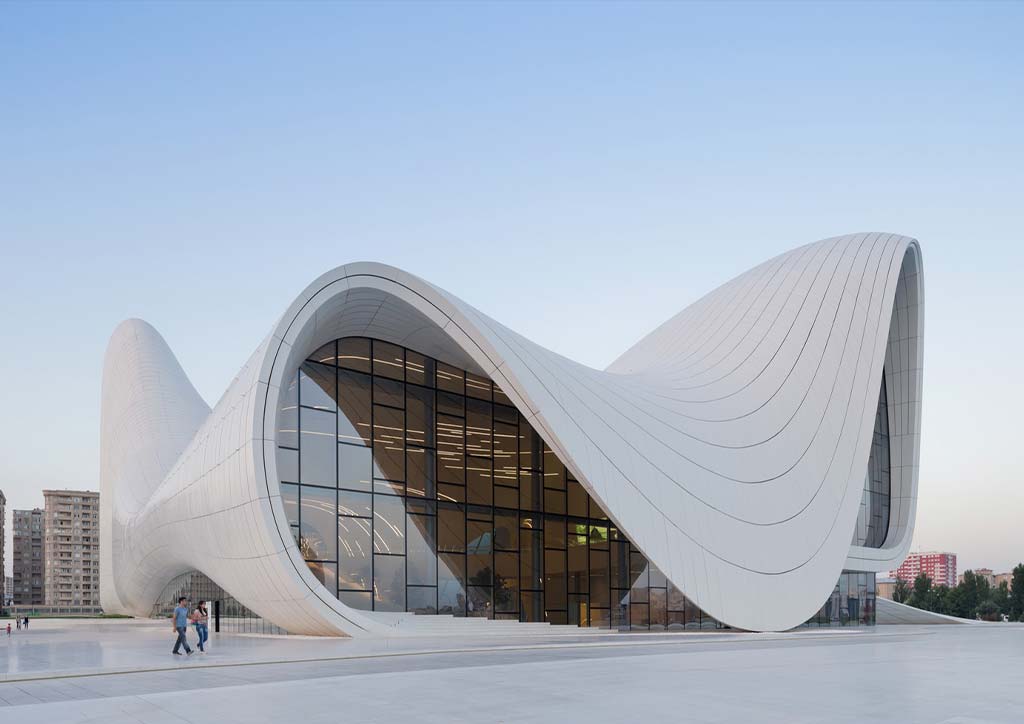

Louvre Abu Dhabi, Abu Dhabi, UAE
When two great things come together, it results in excellence. Completed in 2017, The Louvre Abu Dhabi is such a marvelous mix of intricate architectural styles that truly represent Abu Dhabi, Arab architecture, and modernism.

Designed to look like “a floating dome structure”, architect Jean Nouvel envisioned the museum to exude calmness and tranquility by welcoming visitors into a place of serenity with the iconic 180-meter, in diameter, 8 layered dome that creates playful showers of lights and shadows resembling twinkling stars. Dubbed the “museum city” in the sea, it is made up of 55 contrasting white buildings. This includes 23 galleries, making it the largest art museum in the Arabian Peninsula.
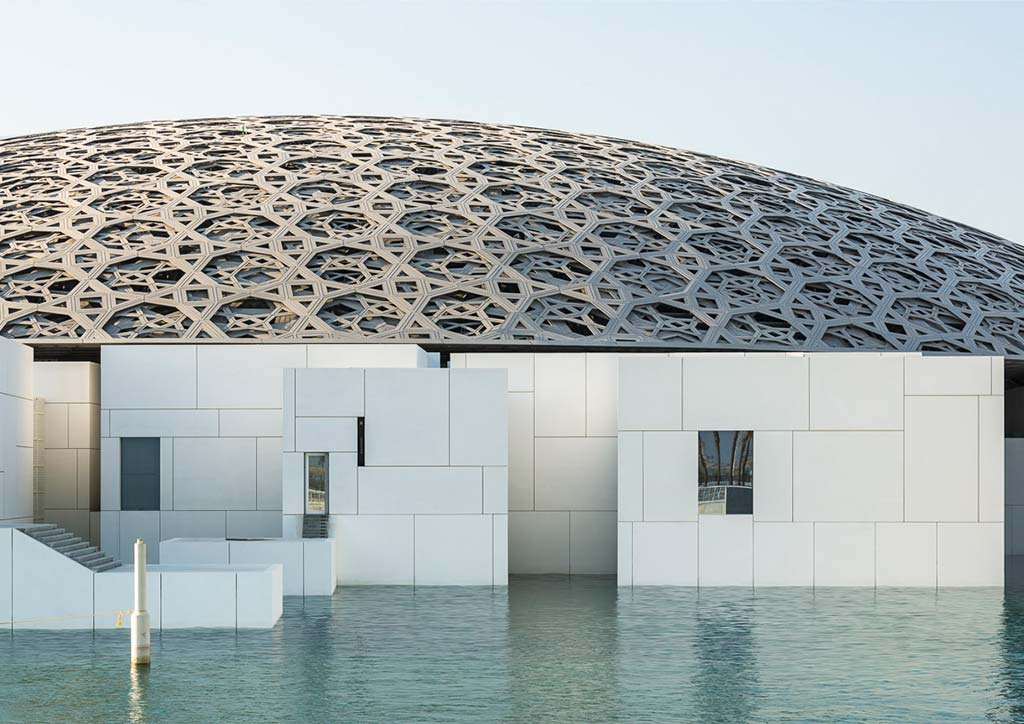
READ MORE: The Beginnings of a New Firm: GK Rustia


